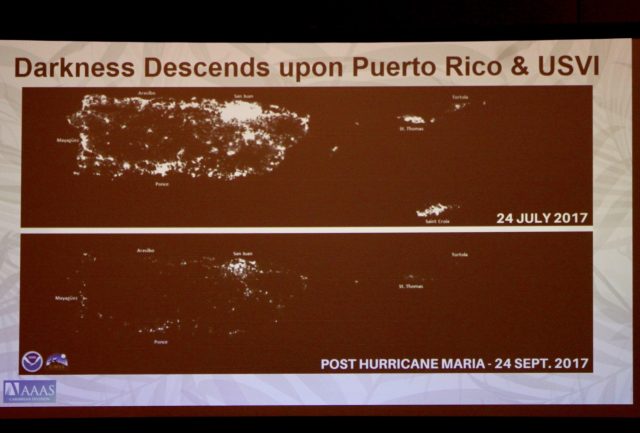AUSTIN, Texas—"So this happened—this is September 2017," Juan Ramírez Lugo, president of the AAAS Caribbean division, tells the audience at the 2018 American Association for the Advancement of Science (AAAS) Conference. The slide that soon greets the room depicts an almost surreal reality: the available power (or lack thereof) on the island of Puerto Rico in the immediate aftermath of Hurricane Maria.
"The island went dark; the Virgin Islands basically disappeared off the map. This blew my mind to not have my cell phone in this day and age," Ramírez Lugo continues. "The routine eventually became get up in the morning, then try to check the news and Status.pr to see how much service has returned to normal."
Ramírez Lugo cited estimates that the cost of Hurricane Maria's damage will total 34.1 percent of Puerto Rico's GDP, so calling the storm devastating almost seems like an understatement. The routine Ramírez Lugo shared highlighted another crucial (re)building block for disaster recovery, one that's now joined general infrastructure and health needs: connectivity. With the vast amount of electrical grid and ground towers damaged, FEMA estimates put cell service availability at a mere 60 percent an entire month after the storm.

No comments:
Post a Comment